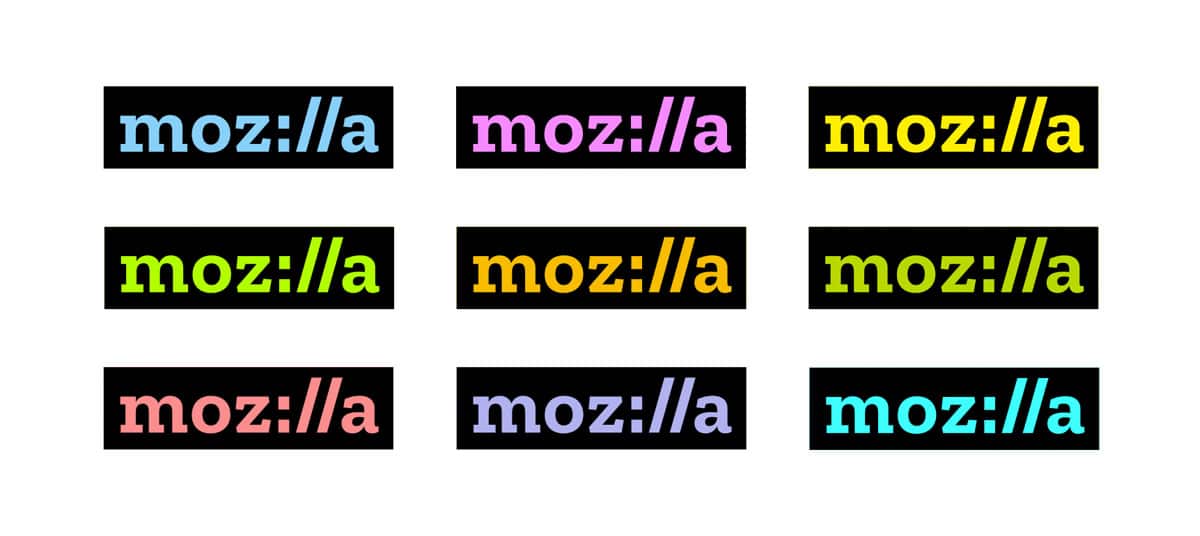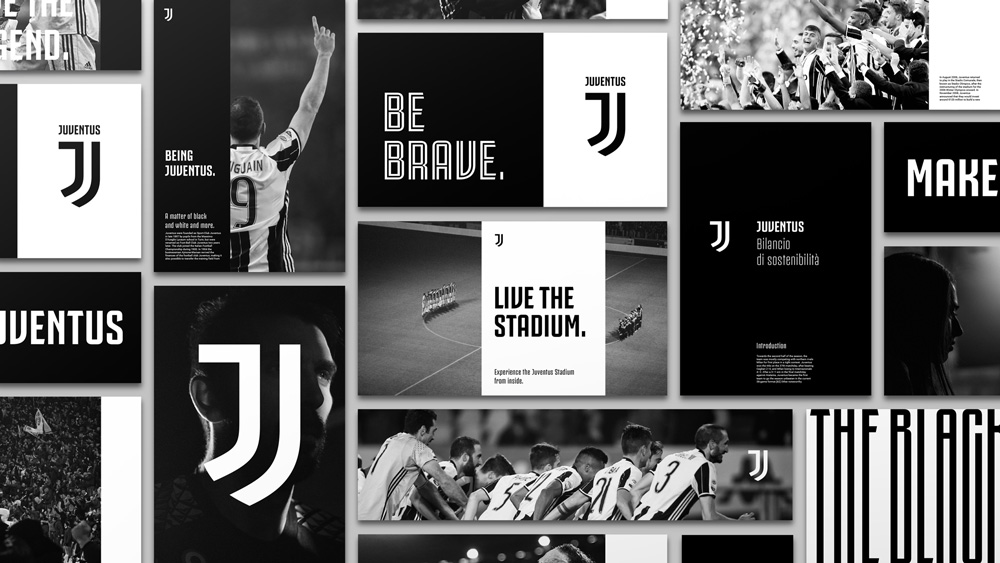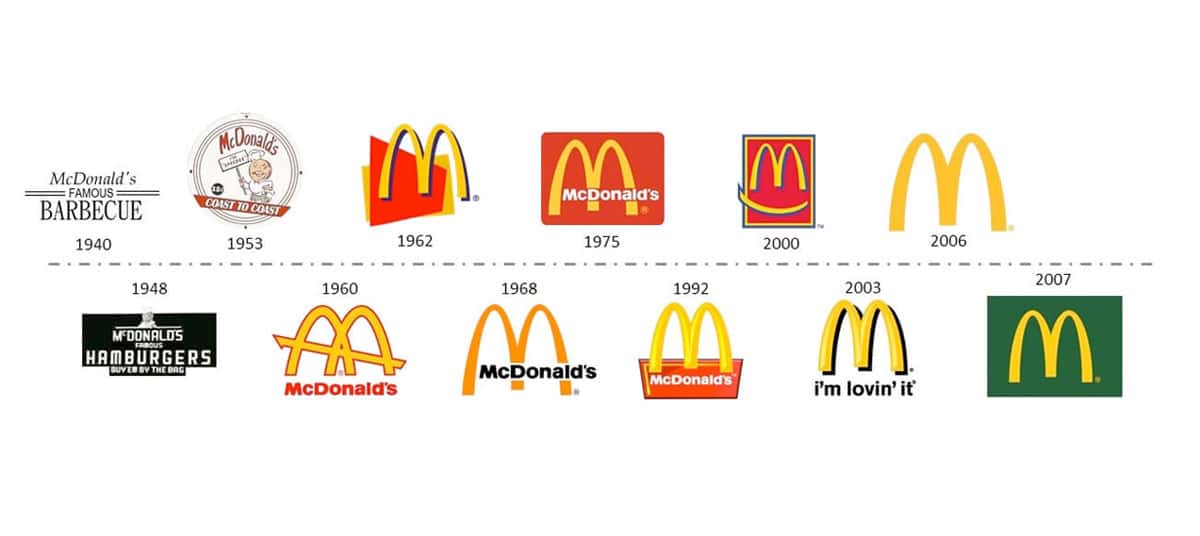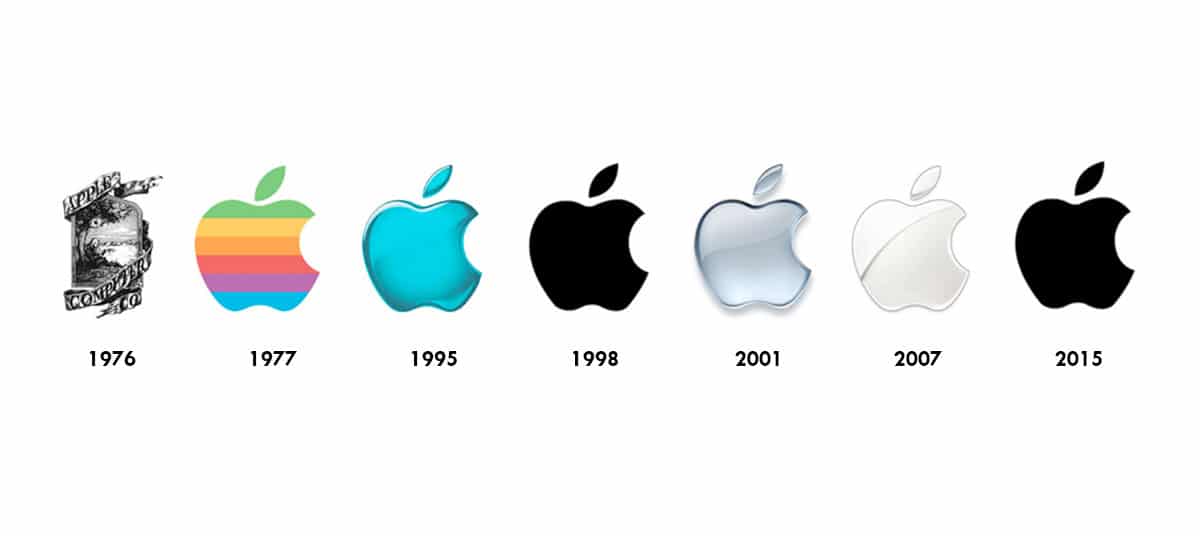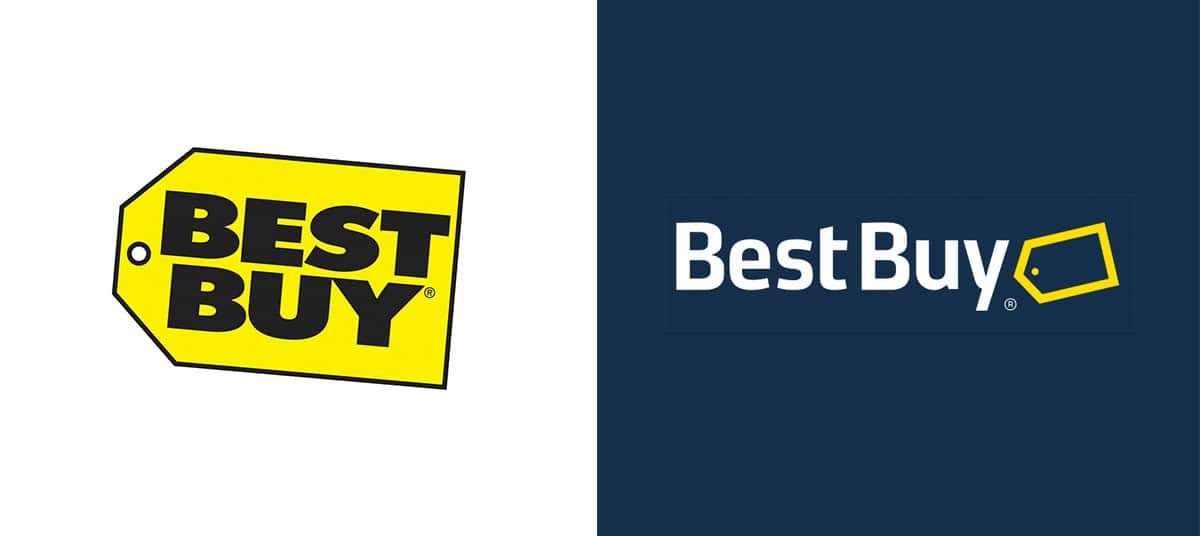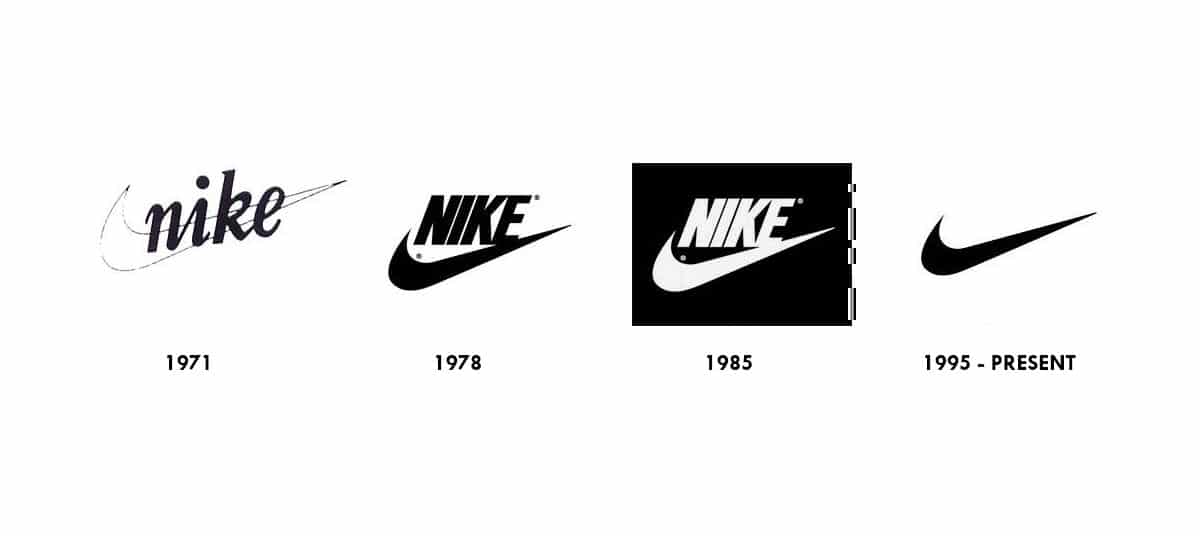This is a guest blog post kindly contributed by Robert Katai of Bannersnack, the online banner maker.
Whether we are talking about a small company or a big corporation, the brand and the corporate identity are the two most important things.
They are dependent on each other and they make the connection between the customers and the company. We all know a few brands, starting with the minor local ones and up to the big corporate brands that are almost universally known.
However, it is almost impossible not to notice that from time to time, some of these companies choose to do a rebranding. Why does this happen and how it should be done? Let’s try answering these questions, but first, let’s define what a rebrand really means…
Rebranding is the creation of a new look and identity for a company, a product or a website. It may encompass a complete change of name, logo design, products, market and identity or, just a few minor changes such as a visual redesign or a new marketing strategy that addresses a new social community.
Thus, you can rebrand a website, a small business, a product and even a corporation, partially or completely.
Reasons for rebranding
If you are wondering whether your small business needs a rebranding or not, just take a look at the following reasons and make a final decision:
1. A change in ownership.
A merge, an acquisition or de-merge, may lead to a rebranding even for popular brands, especially when small businesses are acquired by or merged with big corporations. A change in the main brand may occur however even when a small company is acquired by a single shareholder who wants to create a new identity and rebrand the products.
Example: When “Mary’s” groceries store” is acquired by John, he may change the brand of the store and rename it “John’s hardware store”. If you want a real life example, remember how a few years ago, Macromedia was acquired by Adobe, leading to a rebranding of their products: macromedia Flash became Adobe flash and so on.
2. Repositioning on the market
Let’s say you produce plastic toys for children of all ages. You have built a well known and respected brand over the years but lately, your sales are dropping fast. So, you decided to produce gardening tools instead. Will you rebrand your business or not?
The answer is yes and this rebranding should start from changing the logo and the tagline of the business, up to the website visual style and the marketing strategy. What was good for the children may not be good for gardeners for example.
Your branding should always reflect your values, your identity and of course, the market you are trying to conquer.
Take for example Mozilla’s new logo. As Marius Ciuchete said:
“The rebranding process proved to be quite lengthy, and the company shared each step with the masses – which I found to be an amazing experience. They designed one of those rare logos that’s completely obvious the instant you see it. The readability of the new logo is really very obvious, “moz://a” reads just fine as “mozilla”.
Furthermore, the rebranding established the wordmark as the serious element, blending it with all kinds of colourful, playful and energetic images and icons that suggest the explosion of content that is on the internet these days.
The most interesting thing about Mozilla’s experimental approach might not be the logo, but how well it all seemed to work in the end.“
3. Internationalisation of the brand
There are some cases when rebranding may be a requirement, if a small local company wants to change its market and go global. Local names and slogans may not be appropriate for an international market or, they may just be unfit or unintelligible.
Therefore, the owner or the CEO decides to rebrand the entire business and adapt its visual image, core values and messages to an international market.
4. Bad reputation of the brand
A bad reputation of the brand may have a negative impact on the business and its overall operations. Rebranding may ameliorate or dispel all the negative associations with the respective brand and restore company’s reputation or at least, set the terrain for a rebuild.
5. The evolution of the company
Companies and brands evolve too, they are not static. Thus, they may reach new audiences and new markets and adapt their messages according to them. The same thing may happen to a small startup business that once it reaches maturity, its shareholders may find out that the initial identity should also evolve along with the company.
As a consequence, it is possible that a rebranding will be made.
6. A change in leadership
Small businesses and private held companies are usually tied to a leader, usually the owner of the company.
Over time, the owner may decide to let another person run the company or, in case of death, the company leadership may be assumed by a legatee. In many cases, the new leader will make some changes that may include also a rebranding, and a makeover of the company under his or her image.
7. The brand does not stand out from the crowd
This can happen as well. You start a small business with something in mind, you create your business plan and your marketing strategy and after a while, you discover that your brand is not noticeable. It does not stand out from the crowd and you have a limited pool of clients despite your good services and overall great feedback.
It’s not unheard of. If you made errors in your initial assessment you are not the only one. However, the main goal of a branding campaign is differentiation.
If the process does not succeed the first time, you can try it again later.
Take for example Juventus, the Italian soccer team who tried this new approach to stand out from the crowd.
Mihai Cora, UX/UI Designer Smartketer said:
“Comparing it to their previous versions, the new one takes a new direction, breaking apart from almost everything before. This new logo approach can be risky because it leaves behind many graphic elements that the audience was familiar with (as the oval shape or the horse), but it’s also a courageous one. Old elements are being simplified and displayed in a very subtle way: the shield shape, the vertical black and white stripes and of course, the “J”. The use of the negative space works also well and brings a modern overall look.”
8. Your brand does not attract professional personnel
The best and most well trained professionals work for the best brands. That’s how economy works. If your brand is not attractive for the talent you are searching for, maybe a rebranding may not be such a bad decision after all.
At this point however, it is not the name of the brand that is the most important but the visual image, the identity and the way you manage to communicate your values to the outside world.
Tips for a successful rebranding
There is no brand without an official logo and a visual identity. This is your starting point whether you are rebranding or just starting your first branding process.
You don’t need specific designer skills in order to create the perfect identity, in fact there are online logo maker tools that will help you complete this task without significant efforts.
Once you have your main visual representation, you may proceed to the next steps…
1. Create a story for your brand (new brand).
Find out who is your audience, what makes them resonate with a product.
2. Do your research.
Talk with your employees, your customers, your fans. Obtain feedback from them and analyse your current branding. Present new ideas and see how everybody reacts to each of them. You need to know how the consumers view your current brand, what they expect from you and how the market is changing in order to change with it not the other way. Knowledge is power.
3. Be consistent.
Once you’ve taken up on a specific road, stick to it. If you don’t know exactly what you want, you will end up spending huge budgets on one failure after another. Plan ahead. That’s why it’s important to create a brand book that will help you stay close to your identity, even after 5 years from your rebranding.
4. Don’t change every aspect of your brand immediately.
A complete rebranding may require resources you don’t have or may take too long to be profitable. Keep the best parts of your old branding and change only the bad ones. Adapt.
5. Build a brand for the people.
They are your main focus. The people: your customers, fans or followers. Think about them when you decide to change your company’s image or identity and try to be what they want you to be.
This is exactly what Wire’s have done with their rebrand – they are getting closer to the consumer.
As Jozef Matas, Product Designer from Teamweek said:
“It’s very well thought out yet very simple. I like the logo mark a lot because it has “W” for Wyre inside as well as it kind of reminds you of transfer icon. Also the bold blue next to the shiny colours and simple patterns creates a really aesthetically pleasing balance.“
6. Create a visual image and stick to it on all platforms.
It doesn’t matter if your customers enter a local store, if they land on your official website or a social media page. They should recognise your brand regardless of the location.
7. Create a visual content strategy.
This is an important step of the rebranding process especially today, when visual content is more valuable than written text. People react better to visuals and they will associate them with your brand easier.
I bet that you heard about Elton John and you know his story, but do you know that sir Elton just launched his new logo in 2017 based on his personal brand?
Gery Meleg, UI/UX designer at Bannersnack said:
“By far my favourite rebrand or let’s just simply say branding of the year was Sir Elton John’s new logo. He was already a brand and a huge global star, he already had a star in Hollywood Walk of Fame but now he has one even in his new iconic monogram/logotype.
Some may say it’s pretty simple, but I think it’s really elegant, minimal and glorious capturing the global star-status of Elton John. Using a star in a logo isn’t always a wise move because of it’s symbolic, patriotic meaning.
Just to give you a counter example Converse’s new logo also puts the focus on they own star but I didn’t find it that representative, even though, Converse was always about the star. I love the execution on the Converse logo, but it just doesn’t have the weight of Elton John’s new logo.”
Start by choosing the right colors to be associated with your brand, choose your fonts, your banners and everything else that may be considered a part of your visual identity.
Create social media pages for your brand and continue your visual branding there as well.
Famous rebranding examples
McDonald’s
After a series of documentaries and real life stories that put the fast food chain in the center of the obesity epidemic in our modern society, the sales begun to drop. They didn’t panic but instead, decided to evolve and face our present reality.
Now, they are in a continuous rebranding process. They started to include healthier foods in their offer, salads and fresh foods and the advertisements are focused on that.
Moreover, they started to renovate their locations and give them a new, fresher look.
Apple
This is probably one of the most successful rebranding stories so far. Back in early 1990s, Apple was a company that faced default. The sales were low and they were suffering from low consumer interest as well.
Everything changed when Steve Jobs took over the company in 1997 and started the rebranding process.
He introduced minimalism and modernity in Apple’s design and managed to revive a brand that was almost dead, by attracting a new and diversified customer base.
Best Buy
I am sure that many of our readers are aware of what Best Buy is and what their business is about. Few however know that they started in 1966 with an audio specialty store named “Sound of Music”.
The rebranding took place in 1983, when the company expanded its product offering to include home appliances and VCRs.
Nike
The Company was founded in 1964 as an official distributor for the Japanese shoemaker Onitsuka Tiger, now known as Asics.
Its original name, Blue Ribbon Sports may not tell you anything now but back then, it was a real brand that gained some popularity in the Portland Metropolitan area. However, in 1971, they started their own line of shoes and changed their name into Nike, one of today’s most popular sportswear brands.
It was one of the best choices in rebranding for a sportswear company for two main reasons: Nike is the name of the Greek goddess of victory, the goal of every sportsman and, on the other hand, it is a name really easy to remember by everybody.
Conclusion
Nobody thinks about rebranding when they start a small business but sometimes, due to market changes or other facts, a rebranding may be your best option if you want your business to continue its growth or perhaps, to reestablish a lost position on the market.
There are success stories and if you read this article, you already know some of them.
Even big brands need a makeover from time to time, there’s no shame in doing it for a small business as well.
What do you think about rebranding? Was your company or your website in this situation? How did you deal with all the challenges that came with this process? How did you managed to overcome all the problems? Let’s chat in the Logo Geek Community.

